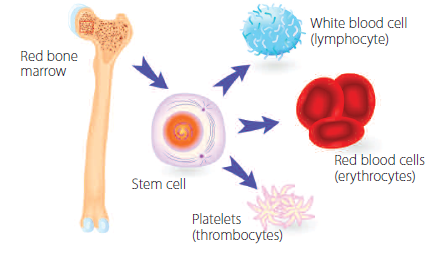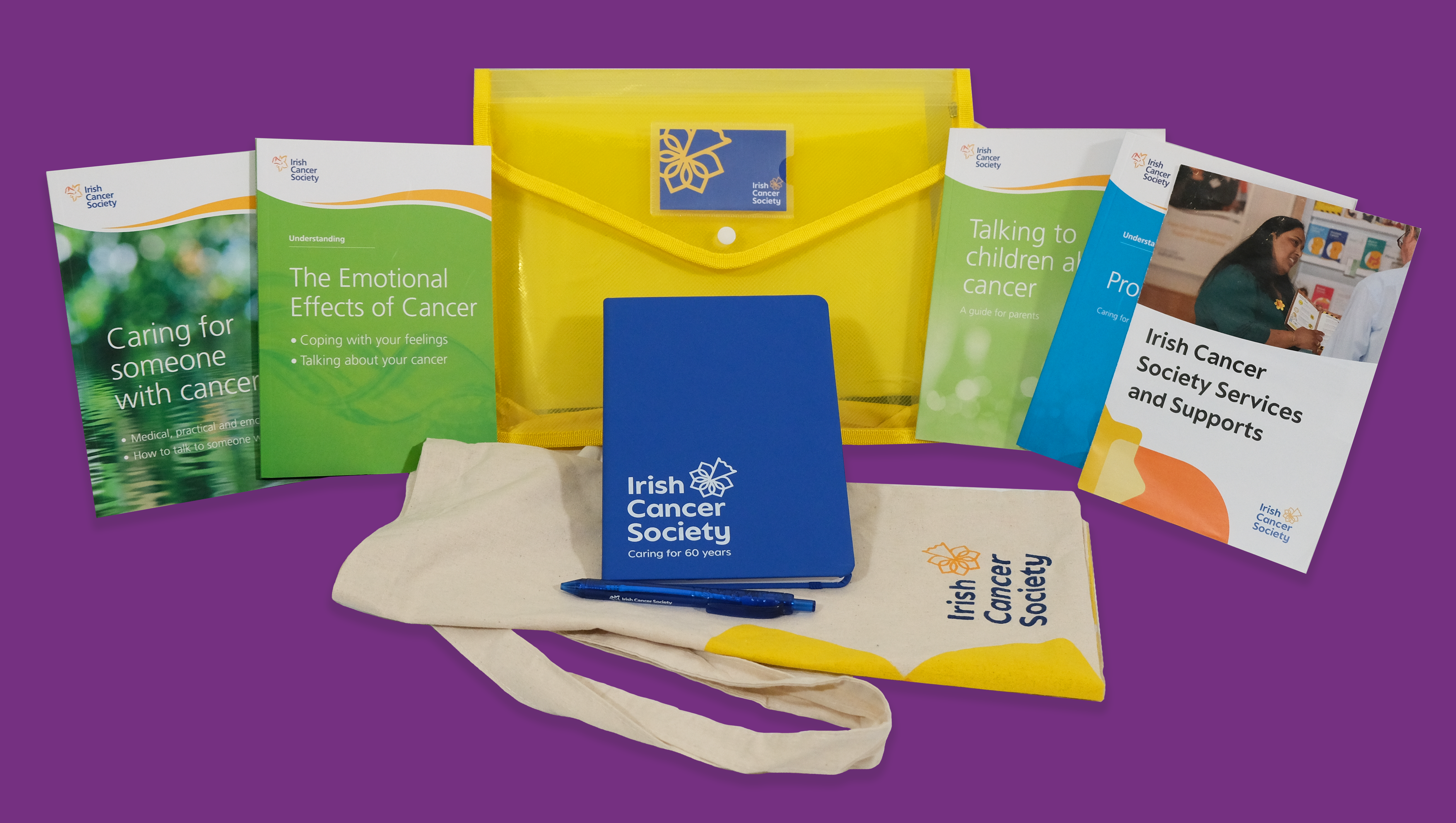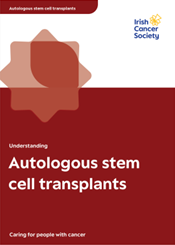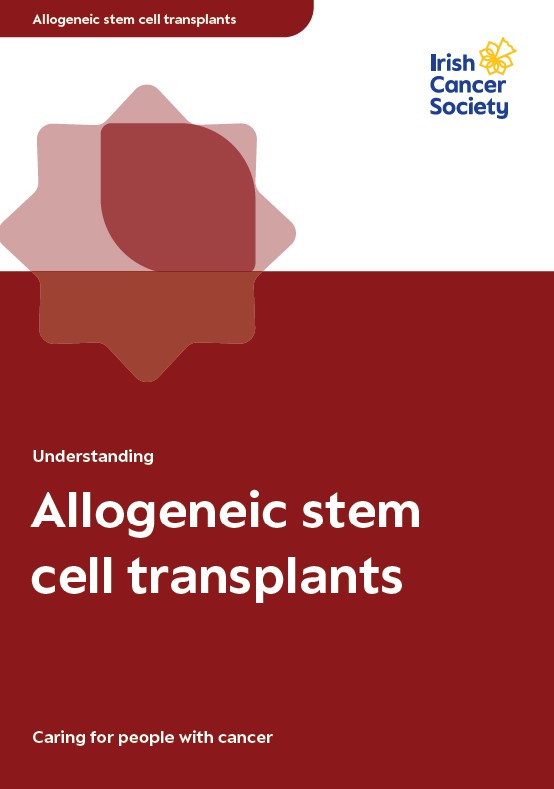Stem cell transplants
Stem cell transplants work by replacing cells that have been destroyed by cancer or certain cancer treatments. The stem cells given in a transplant can grow into new healthy blood cells in your bone marrow.
What is a stem cell transplant?
Stem cells are young cells that can grow into different types of blood cells. Cancer or cancer treatment (such as high-dose chemotherapy or radiotherapy) can destroy stem cells, meaning you don’t have enough of the blood cells you need.
Stem cell transplants work by replacing the cells that have been destroyed, using either stem cells collected from your body before treatment or stem cells from another person. The stem cells given in a transplant can grow into new healthy blood cells in your bone marrow.
About stem cells
Stem cells are blood cells that are at the earliest stage of their development. They are found in your bone marrow, which is a spongy tissue found within bone, in particular your hip bones. Bone marrow makes all of your body’s blood cells. Stem cells can develop into:
- Red blood cells, which carry oxygen around your body.
- White blood cells, which help to fight infection.
- Platelets, which help blood to clot and prevent bleeding.

About stem cell transplants
- Stem cell transplants can be used to cure or control cancer, depending on the type of cancer you have.
- Stem cell transplants involve a very high dose of chemotherapy and sometimes radiotherapy, so you will need to be well enough to have this treatment.
- You are likely to have side-effects after this treatment, because of the effect of the high dose treatment on your bone marrow and other parts of your body.
Who is suitable for a stem cell transplant?
Stem cell transplants may not be suitable for everyone. It depends on a number of things such as:
- Your age and general health
- Whether a suitable donor is available
- The type of cancer you have and the risk of it coming back
Where will I have a stem cell transplant?
Stem cell transplants take place in special treatment units only. You may spend up to 6 weeks in hospital. For 6-12 months after the transplant you may have to go to hospital very often for check-ups, antibiotics or blood transfusions.
Types of stem cell transplant
There are two types of stem cell transplant:
Transplants using your own cells
Transplants using your own cells are called autologous transplants
Tranplants using stem cells from another person – a donor
Transplants using your own cells are called allogeneic transplants



Talk to a Cancer Nurse

Support Line
Our Daffodil Centres



